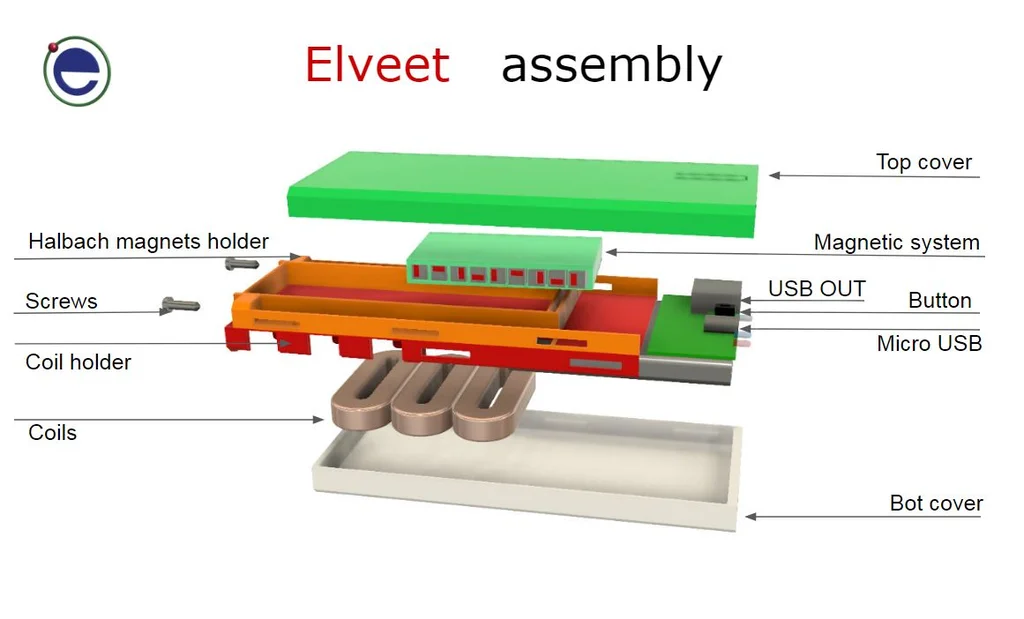Kinetic Energy Sparked by a Power Outage
That outage wasn’t even long, maybe 45 minutes tops. But I still remember sitting in the dark with my unfinished script, a flashlight balanced on my shoulder, and my thoughts spiraling. I wasn’t just annoyed—I was mad. At myself, at the grid, at how I’d never thought about backup solutions seriously. That night, I decided to go off-grid… at least partially.
Building a Charger Powered by Kinetic Energy
I’ve always had this thing for self-sufficient tech—solar chargers, crank radios, that kind of stuff. There’s something poetic about generating your own energy, even if it’s barely enough to charge your phone. And maybe it was the frustration talking, but the next morning, I opened a note in my phone titled: “PROJECT: CHARGER — Don’t Let The Grid Screw Me Again.”
Originally, I was thinking solar, but my desk isn’t near a window, and I’m usually coding when the sun’s gone. That’s when the idea of kinetic energy hit me. What if I could literally move and turn that motion into power? What if sitting still wasn’t my only option during outages?
I dragged my old, dusty exercise bike out of the storeroom and got to work. (Okay, full disclosure—I Googled a lot of this. I’m a developer, not an electrical engineer.)
Living Off-Grid with Kinetic Energy and a Bike
After about a month of weekend tinkering (and ruining one perfectly good USB cable), I finally had something… usable. Not beautiful, but it worked.
Ten minutes of pedaling gave me enough juice to run my desk light and a small fan for half an hour.
That alone felt like victory. Over time, I upgraded the setup. Added a small Li-ion battery bank. Hooked it to my Pi-based dashboard that shows charge levels. Got fancy and installed a switch to prioritize devices.
Was it overkill? Maybe. But it gave me something no power bank ever did: control.
Now, whenever there’s an outage or I’m just feeling lazy-slash-guilty about not exercising, I hop on the bike and charge up. It became a ritual—pedal, sweat, debug.
Why?
I’ve been asked this a lot. “Why not just buy a UPS?” “Isn’t this a bit much for just charging your phone?” Sure, maybe. But for me, it wasn’t just about backup power.
It was about agency. About knowing that I could still build, still write, still create, even when the outside world was flickering. Plus, there’s a kind of calm that comes with it. Pedaling while watching logs roll by on a Pi-powered screen feels… grounded. Literal kinetic feedback while the system hums. It’s bizarrely satisfying.
And also? I got fitter. Slightly. Not marathon-ready or anything, but I don’t huff when I take stairs now. Win-win.
Tech Stack
So no code here, but here’s my “hardware stack” if you’re curious:
• Repurposed exercise bike with flywheel
• Small dynamo generator (salvaged from an old treadmill, believe it or not)
• Charge controller (bought a basic one off Amazon)
• 12V battery bank
• USB step-down converter (for 5V output)
• Raspberry Pi Zero W (because it sips power)
• My stubbornness
I later added a solar panel as a secondary source and a tiny wind spinner I made out of scrap metal. Do they help much? Not really. But they look cool on the balcony.
The Quiet Joy of Making Stuff
One thing this project taught me—aside from how many volts it takes to shock you—is that tech doesn’t always have to be about scalability, performance, or clean architecture.
Sometimes it’s just about making something silly and small and useful for yourself. Something that solves your problem. Something you can point to and say, “I built that, and it works.”
That feeling? Can’t put a price on it.
Conclusions
If you’re reading this and thinking, “Should I build my own off-grid tech project?” my answer is: hell yes. Doesn’t have to be perfect. Doesn’t have to impress anyone. But do it.
Start small. Fail a few times. Curse a lot. Learn stuff. And maybe—just maybe—find joy in watching a tiny LED blink, powered by your own effort. Feels kind of poetic, honestly.
Read more posts:- Implementing a Voice-Controlled 3D Printer Interface with Rhasspy and Node.js




Pingback: Neuromorphic Vision: Implementing a Brain-Inspired....| BGSs